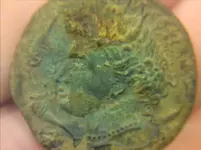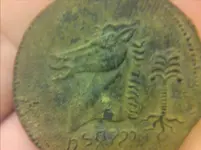ugotit22
Bronze Member
- Joined
- Dec 26, 2007
- Messages
- 1,771
- Reaction score
- 563
- Golden Thread
- 0
- Location
- The Dirty Shire
- Detector(s) used
- Whites DFX, and Whites IDX Pro
Hey guys
i went to this 1800's farm house today and come up with this in the front yard. It is copper about the size of a half dollar. It has what looks like a horses head with some strange symbols and one side. The other side looks like the bust of a women wearing a wreath around her head.
I have no idea what it could be.
any information would be great.
Thanks
Keith
i went to this 1800's farm house today and come up with this in the front yard. It is copper about the size of a half dollar. It has what looks like a horses head with some strange symbols and one side. The other side looks like the bust of a women wearing a wreath around her head.
I have no idea what it could be.
any information would be great.
Thanks
Keith
Attachments
Upvote
2








 I understand James II was chased out of Britain and into Ireland where he minted said coins to pay troops to reclaim throne which he never did
I understand James II was chased out of Britain and into Ireland where he minted said coins to pay troops to reclaim throne which he never did 
 Must have left it on the train.
Must have left it on the train.